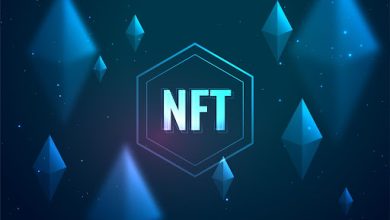What Is Next-Generation Firewall? A Comprehensive Introduction to the Third Generation of Firewalls

Cybersecurity programmes are in desperate need of modernization to keep up with the rate of digitization. Only around 60% of an organization’s business ecosystem is currently protected by a robust security perimeter. The remaining 40% is frequently left vulnerable to breach, vulnerability exploits, and targeted hacker attacks.
Such an equation makes sense in light of the corporation’s growing technological footprint. However, this is scarcely acceptable. As a result, more comprehensive cybersecurity solutions are emerging. Among these are next-generation firewalls (NGFWs).
What is Next-Generation Firewalls (NGFW)?
NGFW is an acronym for next-generation firewall – a third-generation network security solution (hardware and software).It enables inbound and outbound network traffic to be inspecting in detail. Apart from standard dynamic packet filtering, NGFW solutions feature add-on capability for application inspection, intrusion prevention and detection, and threat intelligence.
These qualities make NGFWs more capable of defending against Advanced Persistent Threats (APTs), malware, ransomware, and zero-day exploits, all of which are prevalent in enterprises of all sizes.
NGFW’s distinguishing qualities include the following:
- Advanced routers and software solutions in combination
- Enforcement of security policies on a finer scale
- Analyses of networking data in context
- Control and awareness of advanced applications
- Capabilities for integrated intrusion prevention and detection
- Global network visibility across users, hosts, networks, and applications
- Numerous deployment options
- Centralized management of security
- Reporting and visualisation of threats
Additionally, ngfw assist in gathering cybersecurity intelligence from sources beyond the firewall. This provides your cybersecurity teams with additional expertise for protecting all network users, regardless of their location or device.
What are the distinctions between next-generation firewalls and old firewalls?
Historically, firewalls were meant to regulate network traffic based on the source/destination IP/network address, protocol, or source/destination port numbers. Each incoming or outgoing packet subject to an inspection check based on the aforementioned criteria in order to obtain a go/no-go status. However, come conducting inspections in an ad hoc manner. Due to the fact that we evaluate each packet independently, the technology is unable to comprehend the broader context of the transmitted content.
This can inconveniently restrict user access to critical resources (e.g., if all corporate IPs are blocked for Twitter, your social media team would be unable to post updates) while simultaneously allowing more sophisticated threats to get through the door (e.g., such as man-in-the-middle attacks).
On the other hand, next-generation firewalls support stateful inspections. This type of solution is capable of determining the functioning condition of packets attempting to enter the network and analysing their content. Additionally, NGFW solutions incorporate a signature-based intrusion detection system (IDS) that analyses odd patterns in network traffic and alerts users to a breach attempt. NGFWs also enable the development of more granular security controls for URL filtering, application access, and traffic shaping, in comparison to traditional firewalls.
Finally, you should deploy NGFW technology as a connecting network to security solutions (including hardware and software), rather than as standalone router devices and/or complementary software.
Organizations who stand to benefit the most from NGFW
Given the huge increase in cyber events in recent years, practically every firm may benefit from a next-generation firewall. However, certain industries are more vulnerable to persistent sophisticated threats. According to IBM’s X-Force Threat Intelligence Index, there are most attack to the following industries:
Financial services and insurance
Manufacturing Energy Retail Services
Government \sHealthcare \sMedia \sTransportation \sEducation
Hackers specifically target Linux systems, operational technology, cloud environments, and Internet of Things (IoT) devices. Last year, ransomware and malware circulation increased as well. Regrettably, the volume of attacks is unlikely to decrease anytime soon.
Organizations in the aforementioned verticals can significantly benefit from NGFW adoption, as these systems provide a strong method of preventing breaches via fine-grained policy administration, simplified threat intelligence, and built-in malware protection.
Additionally, suppliers of next-generation firewalls offer reasonable pricing based on the scale of your infrastructure, the capabilities required, and the deployment situation or in the cloud. Smaller businesses working in regulated industries can afford such solutions, however bigger multi-branch firms will likely see a faster return on investment.



